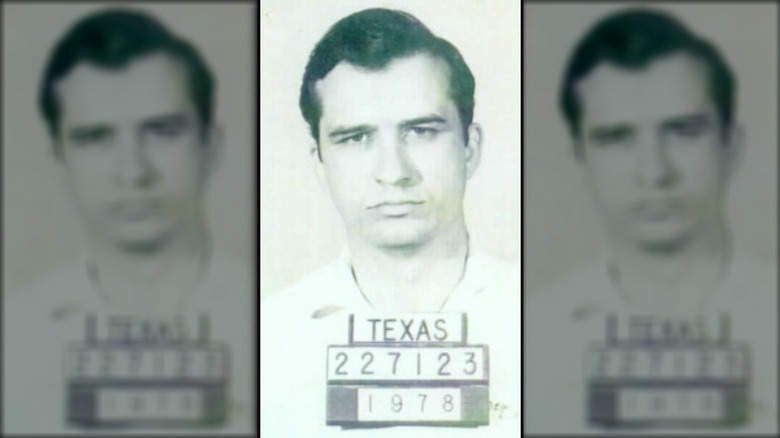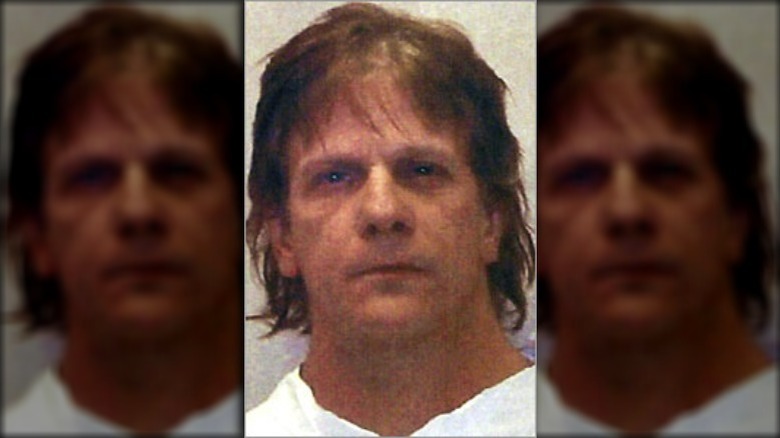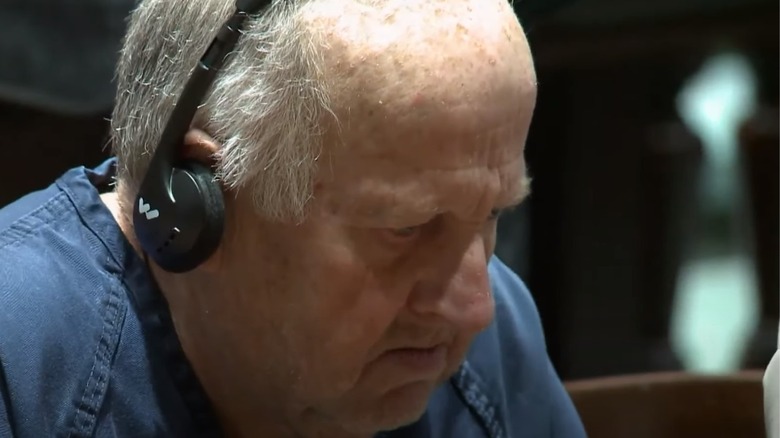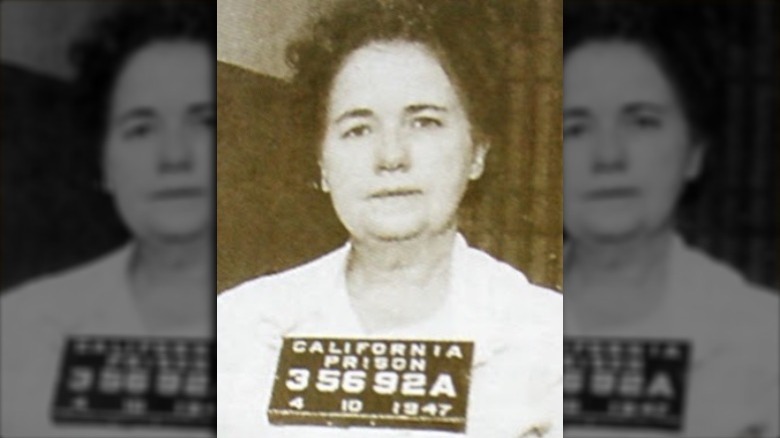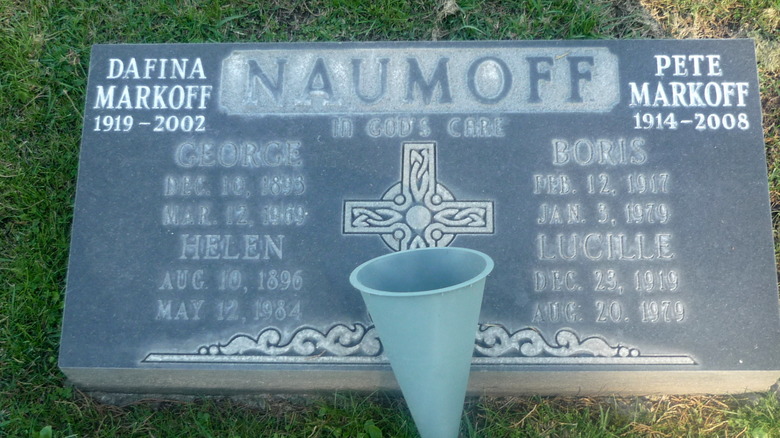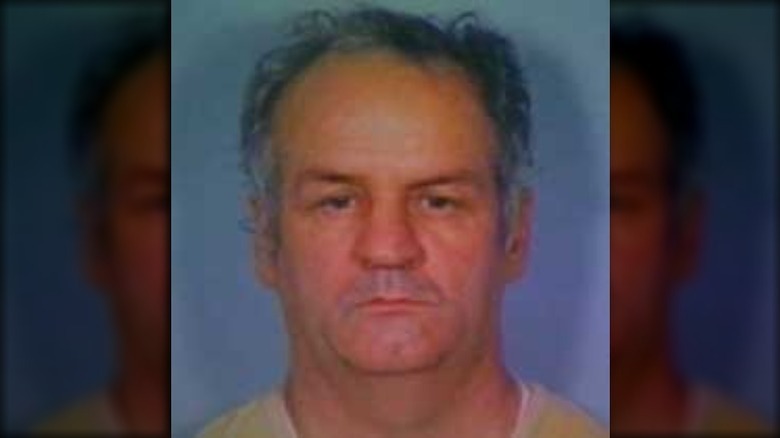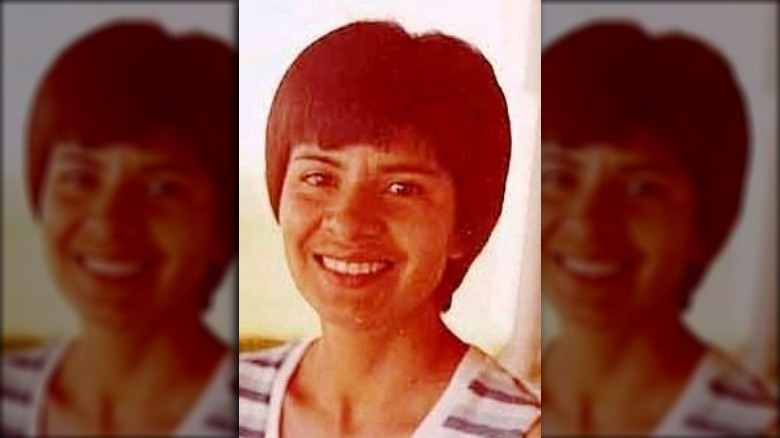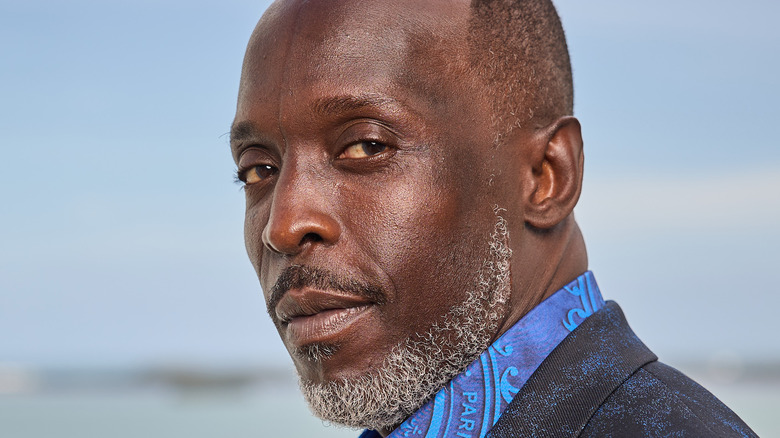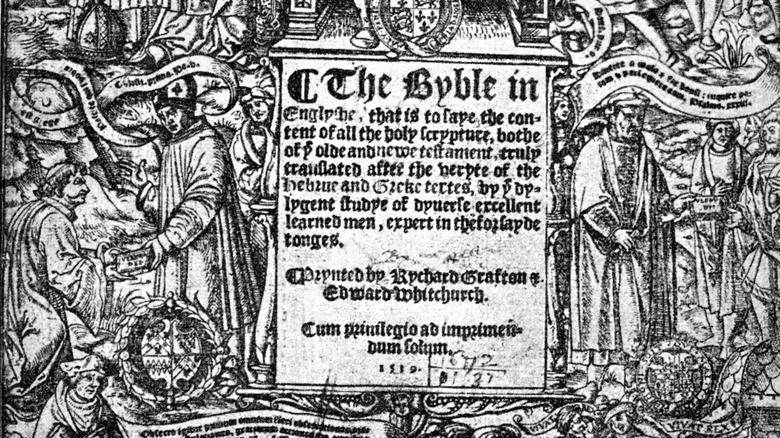
Paroled Killers Who Murdered Again
Justice is a tricky thing. It’s also one of those things that the-powers-that-be really need to get right, but sometimes, bad things happen.
According to the Department of Justice, there’s three conditions a person must meet in order to be paroled. They need to have been something of a model prisoner while they were incarcerated, they need to have served enough time that their release won’t diminish the impact of the crime they were convicted of, and the “release would not jeopardize the public welfare.”
Sadly, that’s a tough thing to judge, and there have been a lot of times that parole boards get it wrong — and there have been a lot of cases where it ends up being a deadly mistake. There are an almost shocking number of cases in which a convicted murderer was released from jail early and went on to kill again. Each one left behind victims and heartbroken families not only left to grieve the horrible deaths of their beloved fathers, mothers, sons, and daughters, but they’re left to do it while remembering — every day — that it didn’t necessarily have to happen.
Dodging the death penalty, released to kill again
When convicted felon Kenneth McDuff was released from a Texas jail in 1989, it was perhaps U.S. Marshall Parnell McNamara who summed it up best: “Have they gone crazy?”
McDuff’s first stint in jail came when he was 18 years old — it was 1965, and he was serving 52 years on burglary charges … in theory. It would come out that he’d confessed to killing at least one woman in 1964, telling one of his many sidekicks, “Killing a woman’s like killing a chicken. They both squawk.” He was out in less than 10 months, and that’s when he murdered three teenagers — including a girl whose neck he broke with the aid of a broom handle. The murders got him the death penalty, but Texas Monthly says that fate intervened in 1972. All death sentences were overturned, and suddenly, McDuff was facing life.
And then, he was looking at getting paroled. He started trying for parole in 1976, and in 1988 — after overcrowding increased pressure to get people out on the streets — he was approved. That day, the local sheriff in the town he was released to predicted: “I don’t know if it’ll be next week or next month or next year, but one of these days, dead girls are gonna start turning up.” The sheriff was too optimistic. Sarafia Parker was killed just three days after McDuff’s release, and he was connected to the murder of eight other women before he was arrested again.
He killed her while she made him a cup of tea
Legal systems are different in different countries, and in the U.K., a convicted felon might find themselves not paroled, per se, but released early “on licence.” It’s basically the same thing — good behavior gets the person out early, and they’re subject to a series of conditions — like regularly reporting to a court officer and staying out of trouble (via Prisoners’ Families Helpline).
In October of 1986, George Johnson confessed to attacking a man in the victim’s home and killing him for £3. The BBC says that he was released on licence first in 2006, ended up back in jail after testing positive for drugs, was released again in 2007, and in 2010, admitted to a daily heroin addiction. He was out on license again in 2011, when he killed 89-year-old Florence May Habesch. He had been working for her and doing odd jobs around the house when she offered to make him a cup of tea. That’s when he hit her — twice — then stole £25 and some jewelry. Habesch didn’t die until sometime late that night or early the next morning, but by the time Johnson confessed to his brother and his brother called the police, she was gone.
George Johnson was arrested and admitted to the murder while in custody, adds the BBC: His brother, John, was also arrested for driving his brother from Wales to the north Midlands before calling police.
His first attempt to kill was at 9 years old
David Edward Maust’s first attempts at killing came when he was just nine years old — that, says The Chicago Tribune, is when he first set his brother’s bed on fire, then tried to drown him in a local lake. It was 1963 and he was placed in the care of the state, and when he turned 17, he headed off to Vietnam. He later confessed that it was while he was stationed in Germany that he first carried through with killing (although he’d gotten close numerous times before). He wrote in his journal, “I never told anybody the truth about that night, because it was a sad bad thing…”
Maust was convicted on a manslaughter charge after claiming the victim had been killed in a moped accident, served his three years, was released, and was on trial for attempted murder not long after. Lying on the stand got him a not guilty verdict, and it wasn’t long before he killed 15-year-old Donald Jones and kicked off a violent spree that took him from Illinois to Texas.
Maust was arrested and jailed in Texas but extradited to Illinois in 1982. Instead of serving his full 35-year sentence, he was paroled in 1999. In 2003, he was on trial again for the murders of 16-year-old James Raganyi, 13-year-old Michael Dennis, and 19-year-old Nick James. He was sentenced in 2005 — confessing to two more murders — then hanged himself in his cell (via Psychology Today).
From good behavior to back behind bars
Before a 1998 law called Truth in Sentencing, the Michigan Department of Corrections allowed offenders to accumulate something called “disciplinary credits,” which were essentially gold stars for good behavior that could be applied to lessen the minimum amount of time a person needed to serve in jail before being eligible for parole. The Washington Post says that it was a handful of these credits that helped speed up the release of Malcolm B. Benson.
Benson, says CBS Detroit, had originally been facing a sentence for first degree murder in 1996 — a felony that, had he been found guilty, would have come with mandatory life in prison (via MLive). Instead, he plead no contest to second degree murder and was ultimately paroled in 2015 — with help from the aforementioned disciplinary credits.
It was just nine months later that another person was dead: 59-year-old Stanley Carter, who was shot and killed during a robbery gone wrong. Eyewitnesses aided in the arrest of Benson, who was later found in a nearby apartment building after reportedly assaulting a woman in the area. He was later sentenced to life in prison.
Not too old to kill again
When Albert Flick was convicted of murder in 2019, it was another in a long list of murders that kicked off when he wife, Sandra, served him with divorce papers in 1979. Three weeks later, he stabbed her 14 times, and after her 12-year-old daughter summoned a neighbor for help, she made sure everyone knew who’d done it with her dying breath.
The Washington Post says Flick served 21 of his 30-year sentence before being arrested again in 2007 — this time, for punching and stabbing a woman. A list of violent offenses finally culminated in another murder that took place in 2018, after he was released again. That’s when witnesses say he “developed an obsession” with a woman named Kimberly Dobbie. When she didn’t reciprocate, he stabbed and killed her. The murder was captured on a surveillance camera (and witnessed by the victim’s 11-year-old twins), and Flick was convicted. The families of his victims were outraged: Elsie Clement — the daughter of Flick’s 1979 victim — said, “There is no reason this man should have been on the streets in the first place, no reason.”
So, why was he? In 2014, Maine Supreme Court Justice Robert E. Crowley explained that he was sentencing Flick to just two years for threatening to kill a woman with a screwdriver. His rationale was this: “At some point, Mr. Flick is going to age out of his capacity to engage in this conduct, and incarcerating him beyond the time that he ages out doesn’t seem to me to make good sense.”
Three decades apart
In 1987, the Los Angeles Times reported that Timothy Chavira had been found guilty of first-degree murder. His stepmother, Laurie Anne Chavira, had disappeared on August 22 of the previous year, and when she was found in the trunk of his abandoned car 11 days later, the only way she was able to be identified was through dental records. At the time, Deputy District Attorney David E. Demerjian said, “The only motive I could come up with was hatred.”
Chavira was paroled on July 28, 2017, the Times reported, and just two years later he was under arrest as a suspect in the strangulation and murder of a 76-year-old retired doctor named Editha Cruz de Leon. His arrest happened just over a mile from the courthouse where he was sentenced for the first murder, and Chavira’s conviction was handed out in June of 2020. Two and a half years had passed since he was released on parole.
At the time, Deputy District Attorney Cynthia Barnes explained that there had been no explanation for the killing: “We honestly don’t know the motive and we don’t know why he picked her. It’s just so sad. Why her?”
'He didn't have the right to continue living'
In 1976, Jimmy Lee Gray kidnapped 3-year-old Deressa Jean Scales. What followed was a brutal assault and murder; Gray was found guilty and executed via Mississippi’s gas chamber in 1983. Scales’ father, Richard, said (via The New York Times): “Even in prison he had been able to talk, to breathe, and to laugh, and he had taken all these things from my little girl. He didn’t have the right to continue living.”
Still, that didn’t keep anti-capital punishment groups from pushing for Mississippi Gov. William Winter to overturn the death sentence, but one of the most prominent voices in favor of execution was Gray’s mother, Verna Smith. She’d been through a murder trial involving her son before.
When Gray killed the toddler, he was out on parole after serving just seven years of a two-decade sentence for his conviction in the murder of his 16-year-old then-girlfriend, Elda Prince. Prince, says Capital Punishment U.K., was strangled before having her throat cut by boyfriend Gray after an argument. The judge that had overseen that trial had argued against releasing Gray early on parole, but it had been approved in spite of his opposition.
'I need lots of answers'
David Cook first found himself behind bars when he was found guilty of the 1988 murder of Beryl Maynard. He knew Maynard because she’d become his pen pal while he was in prison for robberies, and when he was released, they met up. Maynard, says The Guardian, was later strangled by Cook when he broke into her home in what started out as just another robbery for him, and Cook was — in theory — given a life sentence.
He only served 21 years before he was released in 2009 and moved into a village in the south of Wales. There, he became friendly with his new neighbor, Leonard Hill. After quickly amassing a debt of thousands of pounds, he killed Hill, ransacked his apartment for whatever cash he could find, then went to the pub for a few drinks.
Hill’s body wasn’t discovered for 12 days, and when Cook was arrested, his family found they had plenty to be outraged about. His sister-in-law explained to the BBC: “In 2008, when he escaped from an open prison, he was deemed to be dangerous. And then suddenly, he’s fine? … I need lots of answers.”
It wasn't me, it was a mysterious, arm-stealing, leg-chopping Spanish woman!
There’s a good chance that Louisa Peete already had a few victims under her belt when she left Waco, Texas (and a boyfriend who ended up mysteriously dead) to head to Los Angeles — an undeniably exciting place in 1920. LA Mag says it was there that she hooked up with the wealthy mining exec Jacob Denton, and when he disappeared in May of the same year, Peete claimed he had argued with a “Spanish-looking woman” and had gone into hiding as he was embarrassed she’d chopped off one of his arms and one of his legs.
Denton’s body was later found buried in his own basement, and Peete was tracked to Colorado, where she’d since remarried. She was found guilty of the murder but was released on parole in 1939. That parole came with the help of some very vocal advocates, including Arthur and Margaret Logan. The Logans — who had cared for Peete’s daughter, Betty, while she was in prison — gave Peete a job and a place to stay on her release.
Margaret soon disappeared, and Arthur — who was suffering from dementia — was committed by his “sister.” That sister was, of course, Peete, and it didn’t take too long before someone noticed all the forged signatures on their financial documents. That, says Executed Today, was when she was arrested again. This time, she became the second woman to be executed in California’s gas chambers.
1979's terror spree
Paul Brumfitt’s story really started in 1975, with the start of his criminal record, but it wasn’t until 1979 that he went on what the Independent called an “eight-day spree of terror.” After a fight with his girlfriend, he assaulted and raped a pregnant woman in her home, then went on to a tailor’s shop in Essex. It was there, reports the Birmingham Post & Mail, that he killed the shop owner with a hammer. Then it was off to Denmark, where he killed a bus driver he (briefly) befriended.
He was arrested on his return to the U.K., and in 1980, he was sentenced to life in prison. At the sentencing, the court declared, “You suffer from a psychopathic disorder, a permanent disability of mind which results in abnormally aggressive and seriously irresponsible conduct.”
In spite of that, Brumfitt was released in 1994 — after serving around 15 years of his life sentence — and it was about five years later that 19-year-old Marcella Ann Davis disappeared. Brumfitt would later be arrested for her murder, and after initially refusing to cooperate with law enforcement, the BBC says it was later revealed that he had kidnapped and raped her before dismembering her body and attempting to dispose of her remains in a Wolverhampton scrapyard. The incident caused a public outcry and a very vocal demand for an investigation into the parole board’s decision-making process, as Davis’ mother said, “Marcella will always be in my thoughts as a loving daughter.”
'Forgiveness'
When Robert Lee Massie was executed in 2001, his last words were “Forgiveness. Giving up all hope for a better past.” There was a lot to forgive, because it wasn’t even his first time on death row. Between January 7 and 15 of 1965, Massie embarked on a spree of robberies and assaults that included the shooting death of Mildred Weiss. Several others were shot and wounded, and when it came time for his trial, the counts of murder, attempted murder, and robbery were enough to get him the death penalty.
Things changed in 1972, though — that, says the Office of the Clark County Prosecuting Attorney, was when the state of California overturned all death penalty convictions and ruled that the whole idea was unconstitutional. In a shocking change of fortune for the convicted killer, he went from death row to a free man when he was paroled in 1978.
And that’s when he killed again: Massie was robbing a liquor store on January 3, 1979 — just 8 months after he was released from jail — when he shot and killed liquor store owner Boris Naumoff. He was once again on trial for murder, and in spite of the fact that it was argued he hadn’t been in control of his actions and suffered from mental illness, Massie pulled appeals and insisted on his own execution — just as Executed Today says he did while on death row in the 1960s. He got his wish on March 27, 2001.
'A whole new set of people'
When convicted killer Graeme Burton came up for parole in 2006, the New Zealand Herald says that one of the most vocal people against his release was the sister of his victim. Burton had been convicted of killing Paul Anderson — a nightclub’s lighting technician — in 1992, when he stabbed him so hard that the force of the blow lifted him off his feet.
Janet Anderson testified (in part): “… if Burton is released, the same pain will be released on a whole new set of people. This cannot happen again.” Her warning was ignored, and Burton was released on parole. He walked out of jail on July 10, 2006 (download), and on April 3, 2007, he was back under arrest and handed another life sentence. In the short time he was out, the Otago Daily Times says that he shot and killed Karl Kuchenbecker, and attacked and wounded “a handful of others.”
Burton has continued to make headlines. When he was arrested in 2007, he was shot, and his leg was amputated after the injury. He was back in the news in 2020, when RNZ reported he had been attacked by another prisoner and stabbed 40 times in the head, face, and torso. He survived, and his attacker was sentenced to “preventative detention.”
The serial killer freed to kill again
Today, Arthur Shawcross (pictured with his daughter and granddaughter) is known as the Genesee River Killer, the serial killer so-named after his New York State hunting grounds. Shockingly, he did most of his killing after being paroled from a sentence for earlier murder convictions.
Shawcross’ first victims were a 10-year-old boy and an 8-year-old girl, killed four months apart in 1972. He was sentenced to 22 years, and according to The New York Times, he started the parole process in 1987. After several rejected attempts, he was released on parole in 1987, and settled in Rochester, New York. By the time he was arrested three years later, he was connected to the deaths of at least 11 women — although it was suspected he had at least a few more victims. Law enforcement found Shawcross — who didn’t own a car — borrowed vehicles before heading out to pick up local sex workers, who he either suffocated or strangled when they got into the car with him.
Not surprisingly, there was a massive outcry and a demand to know why the state’s parole board had authorized Shawcross’ release, but the county’s district attorney, Howard R. Relin, told the NYT that tragedies weren’t as uncommon as one might hope. He said, “Every prosecutor in New York State can recount three or four horror stories about people who never should have been paroled and were.” Shawcross was given a sentence of 250 years, and died in prison in 2008.
The first murder was over a parking space
In 1978, Arthur J. Bomar Jr. committed his first murder. The Washington Post says that it happened in Las Vegas, after a disagreement over a parking space. He was released on parole after 11 years, and that’s when he headed back to Pennsylvania in order to be near his family.
That was in 1990, and while that was all well and good, it was also the year that he was arrested for an alleged assault. Three years later, he was convicted on assault charges from another incident, and both of those should have been enough to trigger a revocation of his parole. They did not: A Pennsylvania detective explained, “Unfortunately, the system is not perfect. Some things happen that slip through the cracks.”
Aimee Willard was a 22-year-old college student who was visiting her family when she disappeared in June of 1996. Just 15 hours after she vanished, her body was discovered in a vacant lot in North Philadelphia, where she had been dumped after being beaten, raped, and murdered. Bomar became a person of interest after a woman reported him for hitting her car from behind then trying to get her to stop, and he was arrested a week later when he tried to break into an apartment. In 1998, a jury found him guilty and gave him the death penalty.
'Don't Let Your Child Go With Strangers'
When 15-year-old Randy Laufer (pictured) went missing in 1987, John McRae — the father of one of his friends — wasn’t a suspect. Not, at least, until Florida investigators called detectives with questions about other missing boys.
McRae, it turned out, had been convicted of murdering an 8-year-old when he was just 15 years old. After spending decades in jail, he was paroled in 1971, bringing an end to what had been a life sentence. Not long after Laufer disappeared, McRae and his son headed to Arizona, and while Oxygen says he was questioned, there was no real evidence of his involvement… aside from the fact that Laufer had last been seen in a car sporting a bumper sticker that read “Don’t Let Your Child Go With Strangers.”
It wasn’t until 1997 that workers on McRae’s old property found Laufer’s remains. He had been brutally murdered and buried, just about 25 feet from the McRae’s home. McRae was arrested along with his son, who was charged as an accessory, says the Associated Press, but since he had been a minor when the murder took place, it was ruled that he couldn’t be tried as an adult. It took a jury just three hours to find him guilty on the charges of first-degree murder, and even though it took until June 15, 2005 for the sentence to be handed out, he was given life in prison. On June 29, 2005, the Midland Daily News reported he had died of natural causes.
Are some people just born bad?
It was the case of John Laurence Miller that made The Daily Mirror (via the Los Angeles Times) ask, “Do children arrive in the world planning to take someone’s life, or is it whatever befalls them as they grow up?”
Miller was born in 1942, and his first arrests for burglary came when he was 13. Just two years later, he moved on to murder: The opportunity came when he spotted little 22-month-old Laura Wetzel playing in the front yard of a house he was planning to rob. Instead of breaking in to steal the guns and money he’d targeted, he took Laura inside, then beat her before smothering and killing her (via the Daily Breeze).
Miller ran after neighbors confronted him, and he made it to Reno before he was recognized, reported, and arrested. He fully confessed, saying, “I always wanted to kill somebody. I was always meeting somebody, some man I didn’t like and wanted to kill.” Not surprisingly, he was given a life sentence. In spite of that, though, he was paroled in 1975. He’d only been out of prison for two months before heading home to shoot and kill both of his parents. When he was arrested, he asked for the death penalty.
'Is that it?'
Sometimes, justice takes a little while. It took more than 30 years for Darryl Kemp to be given the death penalty for the murder of Armida Wiltsey (pictured), says the East Bay Times, and when the verdict was finally handed out in 2009, Kemp’s only response was, “Is that it?” It was the second death sentence for Kemp, who was 73 years old at the time. Attorneys voiced their doubts that he was going to live long enough to be executed, but the death penalty stuck. That time.
Wiltsey was killed while she was out jogging in 1978, and it was just four months after Kemp had been released from prison on parole. He had been put on death row for the 1957 murder of a Los Angeles nurse named Marjorie Hipperson but was one of a number of convicted criminals who had their death sentence overturned en masse with a 1972 ruling that declared the entire practice unconstitutional.
SFGate says that at the time Wiltsey was killed, Kemp was arrested as a suspect. When they were unable to match Kemp’s hair with hair found at the scene, he was released. It wasn’t until the case was reopened in 2000 that DNA technology had advanced to the point of allowing blood under the victim’s nails to be sequenced and matched with the DNA of convicted felons, and Kemp was a match.
Showing serial killers how it's done
Andrew Dawson is from Ormskirk, a town in Lancashire, England. It’s not far from Liverpool, and it’s where he killed his first victim. That was a 91-year-old shopkeeper named Henry Walsh, and according to the Liverpool Echo, Dawson had stabbed him 11 times before stealing about £50. Dawson was handed a life sentence in that 1982 trial, but by 2010, he was back on the streets.
The BBC says his next victim, John Matthews, was discovered in his own apartment on July 25, and just five days later, Paul Hancock was discovered in the same apartment building. Both had been stabbed multiple times, and both were discovered in their bathtubs. Dawson claimed he saw himself as an “Angel of Mercy,” and admitted to the killings at his trial. Those who testified against him said he had a fascination with serial killers, and his brother testified that he often repeated the belief that killers — particularly Peter Sutcliffe, the Yorkshire Ripper — “were wimps,” and he wasn’t going to be arrested: He was going to go out “in a blaze of glory.”
That didn’t happen. Dawson was arrested in Whitehaven — a town that had been the site of a mass shooting just a few months prior — and was sentenced to life in prison. Again. As for the parole board, they explained: “We always knew he was a difficult man, but there was nothing in all the years to indicate … he was planning to kill again.”

How Joseph Stalin Was Even More Evil Than You Think
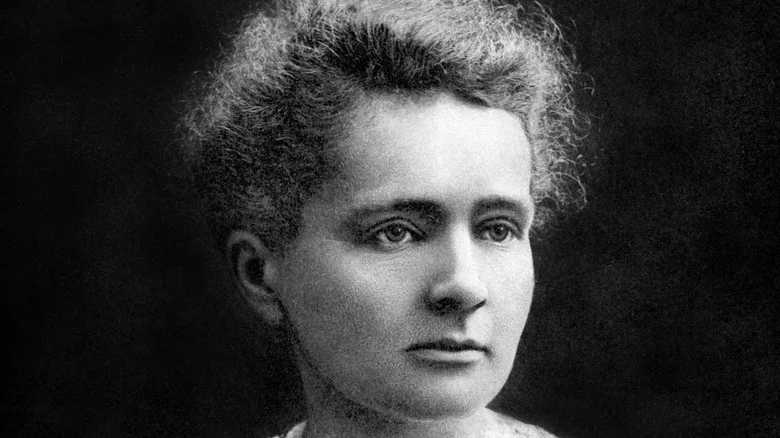
Why Marie Curie's Most Important Work Was Done In A Shed

Kenneth Feinberg: The Truth About The Lawyer Who Helped 9/11 Victims
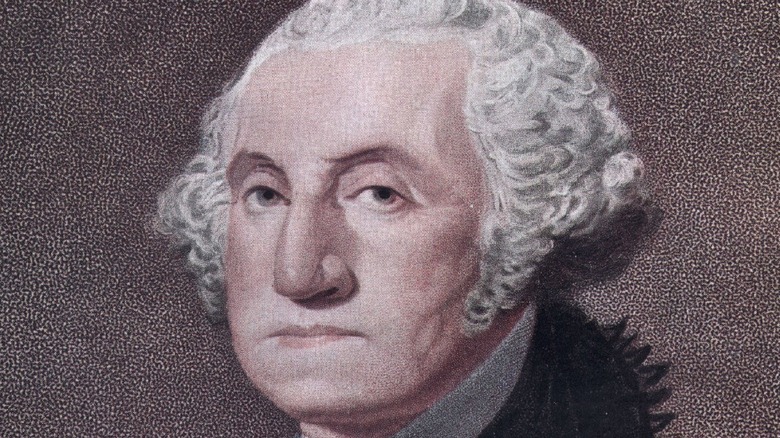
Why George Washington's Second Term Was A Nightmare

The Stunning Number Of Animals Steve Irwin And His Family Have Rescued

The Truth About Nazi Germany's Very Different Version Of The Bible

Yukio Mishima: The Life And Tragic Death Of The Japanese Author
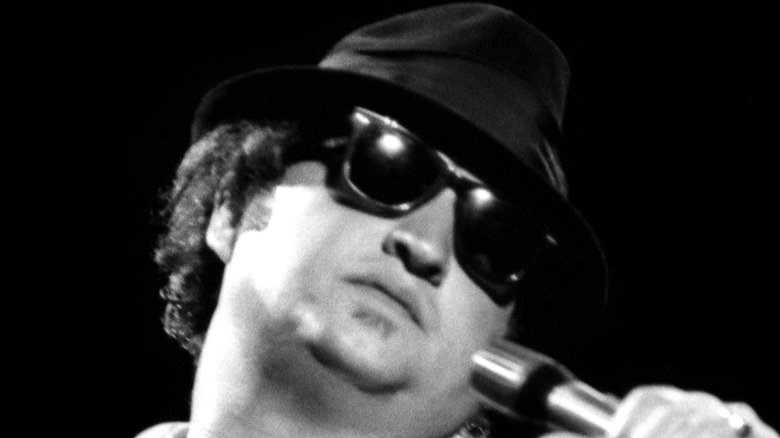
The Surprising Connections Between The Blues Brothers And Star Wars

Who Was St. Valentine?
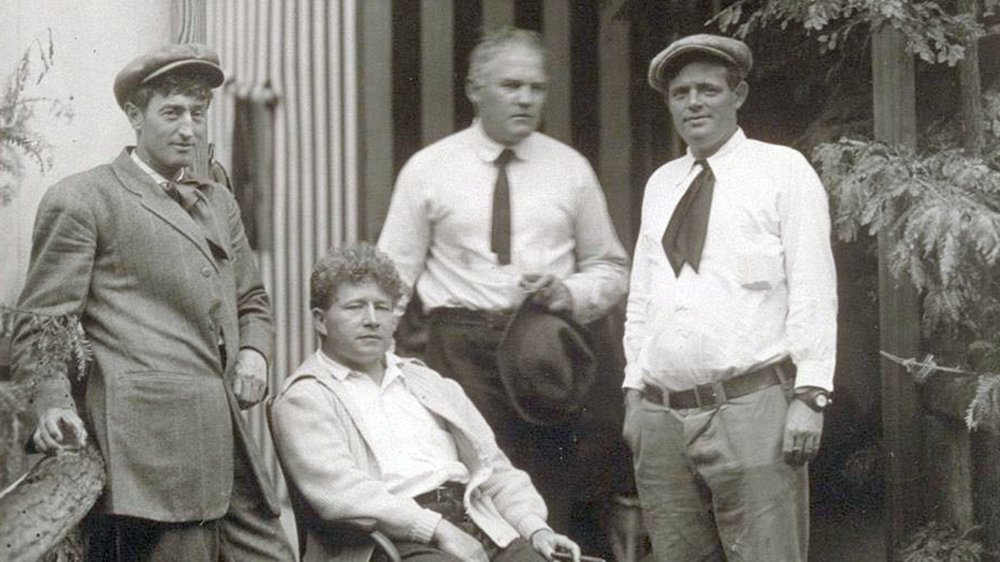
The Illegal Thing Connected To Bohemian Grove
